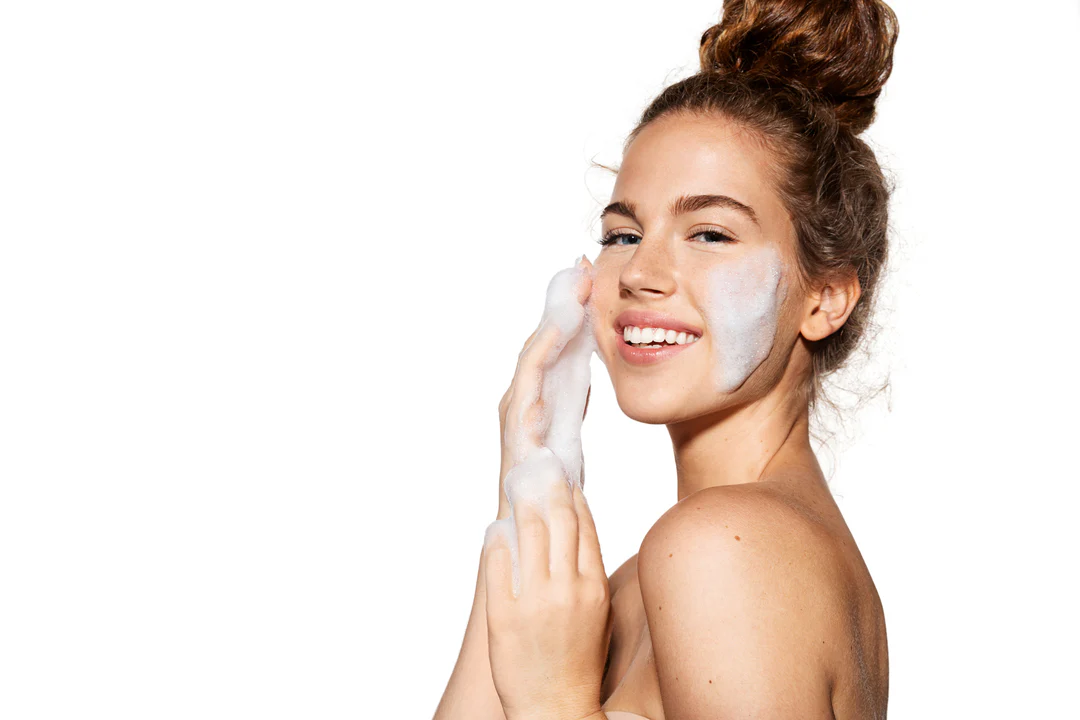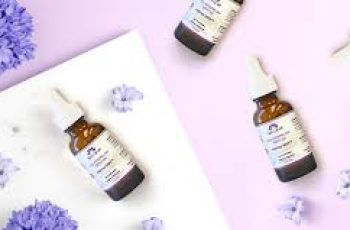Squalane and hyaluronic acid are two of the hottest ingredients in skincare right now. Both are showing up in a variety of products, from serums to face washes, moisturizers, and more.
Both are hydrating ingredients, but with different properties and functions. Depending on your needs, you may find that one or the other is a better fit for your routine.
To answer all of your burning questions about squalane and hyaluronic acid, we reached out to two dermatologists. Read on to learn what makes each ingredient unique, which one is best for you, and whether you can use them together.
What is squalane? Squalane is a lab-developed, hydrogenated form of squalene, which is “a naturally occurring lipid component of sebum that moisturizes the skin,” says Dr. Blair, FAAD, a board-certified cosmetic and medical dermatologist.
Blair Murphy-Ross, MD “Squalane is an emollient that softens the skin and helps retain moisture in the skin. [It] protects and supports the skin barrier and has antioxidant properties that can reverse and prevent free radical damage.”
If you’re wondering how squalane differs from squalene, Murphy-Ross explains that the former has the skincare benefits of squalene while making it more durable.
This makes squalane more suitable for use in skin care, as squalene is an unstable molecule. As we age, our natural squalene production decreases.
So if you find your skin is getting dry over time, these ingredients can help. “Squalane is also lighter than squalene, so unlike squalene, it’s better suited for acne-prone skin,” Murphy-Ross adds.
What is hyaluronic acid? Hyaluronic acid is a hydrating molecule that can attract and bind up to 1,000 times its weight in water.
“It’s a natural ingredient found in the skin, eyes, and joints that acts as a humectant, or a substance that draws water into the skin,” says Rebecca Marcus, board-certified dermatologist and founder of Maei MD.
Hyaluronic acid has an immediate plumping effect on the skin and can reduce the appearance of fine lines. That makes this hydrophilic ingredient very popular, and you’ll almost certainly see some brand indicate that their serum or moisturizer contains this powerful yet gentle acid.
Squalane vs. Hyaluronic Acid: The Difference Murphy-Ross tells us that the main difference between squalane and hyaluronic acid is their chemical makeup and the way they hydrate the skin. Here’s a little science lesson to explain:
“Squalane is a lipid and hyaluronic acid is a glycosaminoglycan (basically a chain of sugar molecules),” Marcus says. “Hyaluronic acid is a humectant, which draws water into the skin, while squalene is an emollient, which means it acts as a barrier, locking water into the skin.”
Just because they work differently doesn’t mean the two ingredients don’t have a lot in common. “Both help keep the skin healthy and hydrated,” Murphy-Rose says. “Both are hypoallergenic and often suitable for sensitive skin.”
“Both are humectant molecules that help increase the moisture content of the skin,” adds Marcus. “Both occur naturally in the body. Well, almost—squalene is naturally occurring, while squalane is a chemically modified form.”
Which squalane or hyaluronic acid is better for you is up to you. “Both are very effective ingredients that are suitable for all skin types, including sensitive skin,” says Murphy-Rose.
“Hyaluronic acid is great for moisturizing oily or acne-prone skin because it is lightweight and brings moisture to the surface of the skin without clogging pores. Squalane is a very effective ingredient for moisturizing dry skin, but
It can also be used in formulas that don’t aggravate acne.”
The frequency of use depends on the type of product, such as serum, lotion, or moisturizer. However, Murphy-Rose generally recommends using it once or twice a day. “Both work well in creams and lotions,” she says.
Can squalane and hyaluronic acid be used together? Yes, you can use squalane and hyaluronic acid together, whether you use separate products or try a formula that contains both. “If you’re using it alone, use hyaluronic acid first because it draws moisture into the skin,” Marcus advises.
“Adding squalane creates a barrier that holds moisture in the skin and prevents it from evaporating.” Ultimately, hyaluronic acid and squalane are great skincare ingredients that benefit most skin types. Because each ingredient helps restore the skin’s natural hydration process, both are great choices if you’re struggling with dryness or dehydration—just make sure you find a formula that works for your general skin type. “Both are great for dry skin, acne-prone skin, inflamed skin, and even sensitive skin,” Marcus says. “It really comes down to personal preference.”
DQH Knowledge drop: In your 20s, your skin cell turnover decreases. (Cell turnover is a key component in keeping your skin youthful.) You know what else slows down? Your collagen production. Starting in your 20s, collagen decreases by about 1 percent per year. Should you want to prevent fine lines and wrinkles, start by eliminating behaviors that contribute to premature aging. “If it’s bad for you, it’s bad for your skin,” says dermatologist Michel Somenek.
“Cigarette smoking reduces blood flow to the skin and causes premature wrinkling and a dull skin texture. Making the repeated pursed motion to inhale can also cause smoker’s lines. Alcohol and recreational drugs are toxins for the skin that damage its cellular structure and DNA,” Somenek tells us. “The faster you eliminate vices while you are young, the better chance your skin and body have to recuperate.” Also, adopting an anti-aging routine in your 20s is key. After all, the best offense is a good defense. We spoke to Somenek and experts Joshua Ross and Audrey Kunin to find out more.
Keep reading for the best anti-aging products for your 20s, according to skincare professionals.
Sunscreen
“We all know that the sun is the number one cause of skin aging and starting the prevention in your 20s is very important,” Ross says. “The majority of your sun damage won’t start to appear until you’re in your 30s, so don’t wait until you see it surface or you’ll be behind the curve. Stay ahead of it with a good-quality zinc-based sunscreen worn daily.”
Farmacy Green Defense Daily Mineral Sunscreen
An invisible sunscreen with SPF 30, plus botanical extracts meant to protect skin with tons of antioxidants. Bonus: It’s clean and fine to use under makeup.
Bareminerals Complexion Rescue™ Tinted Moisturizer Broad Spectrum SPF 30
Although we recommend you use your SPF and moisturizer separately, we also understand moments when you don’t have time or energy for that extra step. For those times, this bareMinerals moisturizer is a great thing to have on hand.
Vitamin C Serum
“A great introduction to anti-aging is to start with a vitamin C serum in your morning skincare routine,” Ross says. “It’s a powerful antioxidant that will neutralize free radicals and brighten the skin.” He adds that it’s a great way to counteract the effects of the sun’s harmful rays, which, as previously mentioned, are among the biggest causes of premature aging.
Drunk Elephant C-Firma™ Vitamin C Day Serum
The Drunk Elephant C-Firma is a lightweight serum that promises to give skin a glow by combining the brightening powers of vitamin C with ferulic acid, l-ascorbic acid, and vitamin E. The included sodium hyaluronate is meant to replace hydration loss, so you shouldn’t have to deal with any irritation.
Sunday Riley C.E.O. Rapid Flash Brightening Serum
This potent serum is jam-packed with vitamin C (15 percent, to be exact), which means it’s a potential superstar at both brightening skin and dousing it in antioxidants.
Peptides
Using peptides on your skin has many benefits, says Somenek. “The skin barrier is what defends the body against pollution, UV rays, bacteria, and toxins. It can be damaged by several everyday factors. Using topical peptides aids in building a stronger barrier,” he says. “Peptides comprise elastic fibers, which are a type of protein. These fibers help to make skin appear taut and firm. Peptides can also help repair damaged skin, relieve inflammation, and even out skin tone. Some peptides can kill acne-causing bacteria that is common in 20-somethings.”
Kunin agrees, saying, “Peptides are an excellent entry point for supporting collagen.” She recommends looking for face and eye treatments that contain these collagen-boosting powerhouses.
Charlotte Tilbury Magic Eye Rescue Cream
This Charlotte Tilbury super-emollient eye cream has a base of coconut oil and shea butter (read: it’s incredibly hydrating). Botanicals plus peptides are meant to help reduce dark circles and boost collagen, respectively.
This creamy moisturizer serves up potent collagen-boosting peptides and pycnogenol, and antioxidant-rich vitamin C. “Instead of sitting on top of the skin, peptides penetrate the outer layer so they go deep. The ‘signals’ they send tell the cells to produce elastin and collagen, which are needed for youthful-looking skin,” explains Somenek.
At-Home Peel Pads
Remember that skin cell turnover fiasco we talked about earlier? One way to help support it is by exfoliating. “Exfoliation is important to help keep skin fresh and luminous,” Kunin says. She recommends using at-home peel pads as an easy and effective way to exfoliate.
“The goal in your 20s is to fight the slowing pace of cell turnover. It is wise to use products that gently exfoliate, yet still remove oil and other impurities. Products that have Alpha Hydroxy Acids (AHA) or Beta Hydroxy Acids (BHA) are a good choice.”
According to Somenek, you should only exfoliate two to three times a week. “People of all ages are guilty of over-exfoliating and that can be too much of a good thing,” he says.
Dermadoctor Kakadu C Intensive Vitamin C Peel Pad
A few swipes of this Derma Doctor powerful peel pad promise to leave your skin glowing and smooth, thanks to the seven (yes, seven) types of chemical exfoliants, including AHA and BHA. It also contains vitamin C via Kakadu plum extract for added brightening and antioxidant protection.
KEY INGREDIENTS Kakadu plum extract is sourced from the Kakadu plum, a fruit grown in northern Australia. It contains vitamin C, which restores the skin’s natural barrier, increases collagen production, and soothes irritation.
Dr. Dennis Gross Skincare Alpha Beta® Universal Daily Peel Pads
These are the gold standard of peel pads, with a cult following and over 900 five-star reviews on Sephora. They’re easy to use and contain a blend of anti-aging exfoliating acids.
Emollient Night Cream
“In your 20s, you need to start upping the hydration in your skincare routine. You may have been cautious of over-moisturizing because of acne in your teens, but as you enter your 20s, your skin transitions and becomes drier,” Ross says. “I recommend an emollient night cream added into your evening skincare regimen.”
“Twenty-somethings need to make sure that they are not using creams that will clog their pores and cause excess oil production,” says Somenek. Opt for non-comedogenic products.
Cerave Skin Renewing Night Cream
One great choice is the CeraVe Skin Renewing Night Cream, which is a non-comedogenic night cream that leaves skin soft and glowy. It combines the moisturizing powers of ceramides and hyaluronic acid.
RoC Retinol Correxion Max Hydration Creme
“The best night cream ingredients contain retinol, benzoyl peroxide, and/or salicylic acid or hyaluronic acid. The goal is to moisturize, yet remove excess oil,” says Somenek. This Roc Retinol Correxion cream fits the bill as it contains both hyaluronic acid and retinol so it promises to moisturize while also being non-comedogenic.



